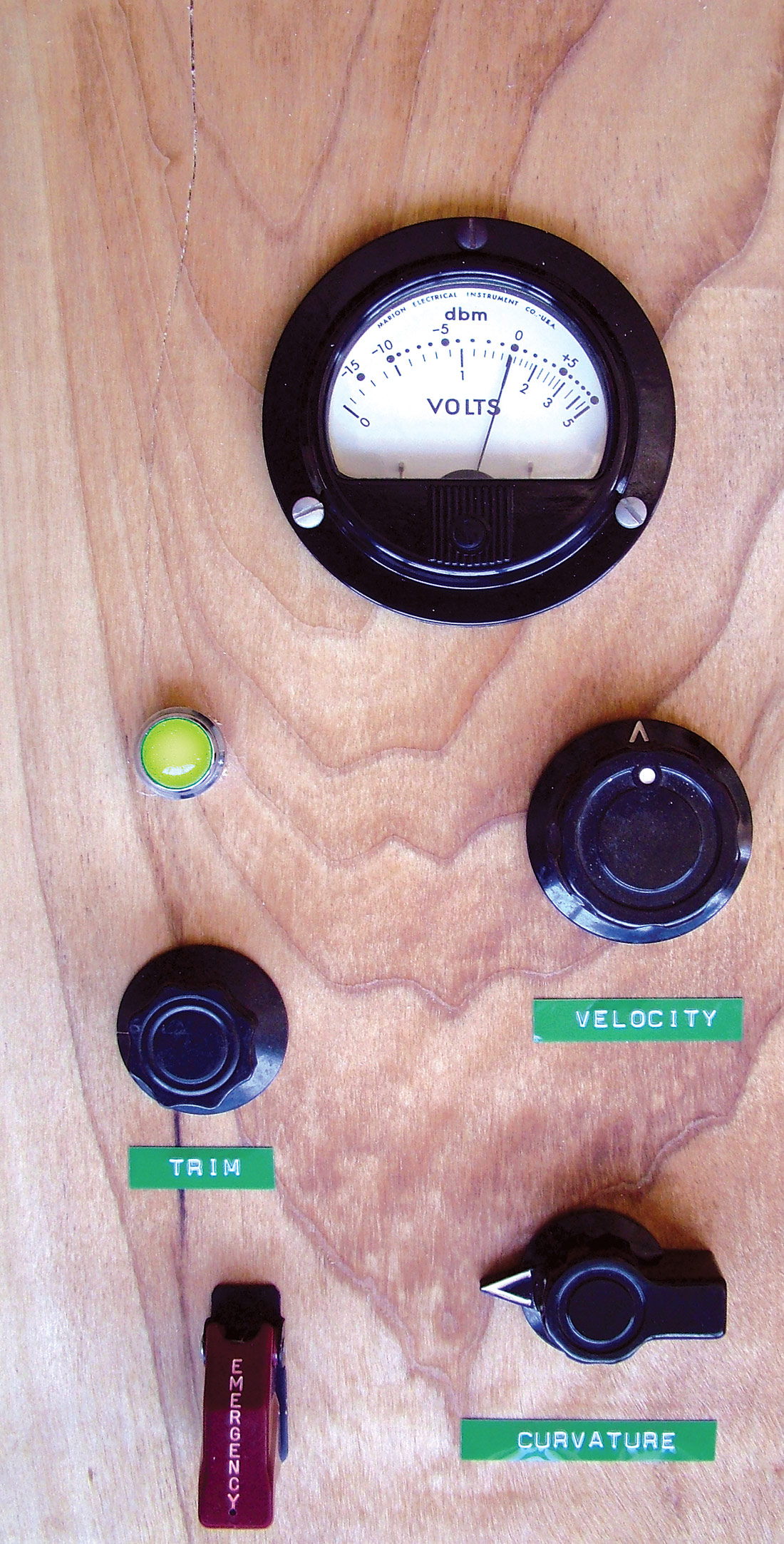The Grace brothers (Michael and Eben) are well-known for their uncompromised designs. I've been a big fan of Grace since JB introduced me to the Model 101 preamp [Tape Op #27] five years ago, and I've used some "Grace" on nearly all the recordings I've made since then. A few years ago, Grace Design entered the 500-series market with their m501, a version of their popular m101 single-channel preamp [#68], and followed with the m502 optical compressor. 500-series users seem constantly on the lookout for modules that add variety to their arsenals. To get right to the point, the m502 offers a pristine flavor, paired with the features and fidelity you'd expect from a classy "full-rack" optical compressor.
Standard controls include threshold, attack, release, compression ratio, and output level knobs, as well as a compression activation switch and peak LED indicator. Additional standout features are a cool, stepped input stage; stereo-link mode (or external sidechain activation selectable via an internal switch on the circuit board); third-party connectivity options for both the Radial Engineering Workhorse [Tape Op #85] and Purple Audio Sweet Ten chassis; and a surprisingly intuitive 10-segment LED gain-reduction meter.
At first, the Grace aesthetic of avoiding dial-markings on pots and keeping the faceplate "clutter free" may annoy those that need guided settings. I say use your ears and the awesome meter, which visibly reacts to attack and release times - and is really big compared to meters on other 500-series modules. If you don't trust your ears and you can't read a gain-reduction meter, you could use your phone's camera for recalls.
So now that we've covered the history and features, how the heck does it sound? Natural, vibey, and smoooooth. The path on the m502 is very pristine, even at high ratios with low thresholds. At gentler settings, you can still hear subtle attack and release adjustments. The Grace's clarity, paired with its large meter, makes tracking with the compressor in-line worry free; it was soooo easy to set the m502 to catch and "ease down" the louder transients of a vocal take. Your life will immediately get easier when using the Grace for bass guitar tracking (DI or mic'ed); get an m502 right now for that reason alone. On handclaps, snares, and kicks, I had no trouble dialing in appropriate attack/release settings quickly and found the Grace to be super-versatile and characteristically natural-sounding on acoustic instruments (guitars, horns, strings, etc.).
Grace sent us a pair of m502s, so I connected the provided stereo-link cable when installing the units into a 500-series chassis. Along with the link cable, other switches on the circuit board (for the aforementioned sidechaining and third-party options) no doubt dictate an open-case design for these modules, making it slightly difficult to install the cards with the link cable strapped; but versatility beats minor inconvenience here though. In stereo-link mode, the threshold, attack, and release controls are summed while the ratios of each unit remain independent "due to slight, unavoidable variances in the opto-coupling devices." The Grace manual suggests adjusting ratios by ear in stereo-link mode. With stereo sources (drum overheads, pianos, etc.), I found it easy to gently control dynamic peaks while leaving the overall performance untouched. On the mix bus, the m502 gave me the versatility to add punch without losing detail. I felt comfortable shaving transients without cramping the mix or inspiring a remix of individual tracks. Though the input switch and gain knob allow for some "drive-y" character control, even at higher ratios with lower threshold settings, I never felt like I was employing any heavy limiting.
In general use, it's immediately apparent that the m502 was built for "classy" fidelity and accurate dynamic control. This makes the Grace an indispensably versatile tool for day-to-day studio use - a must-have for your 500-series rack. ($625 street; www.gracedesign.com) -SM




_disp_horizontal_bw.jpg)